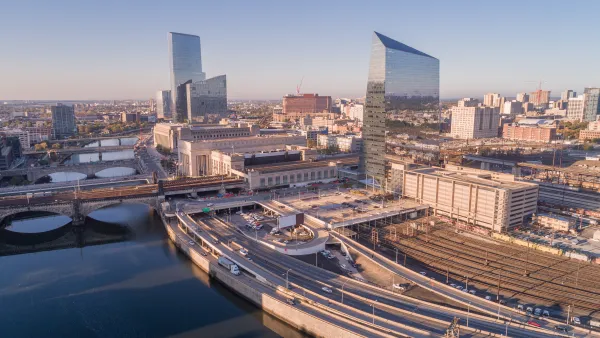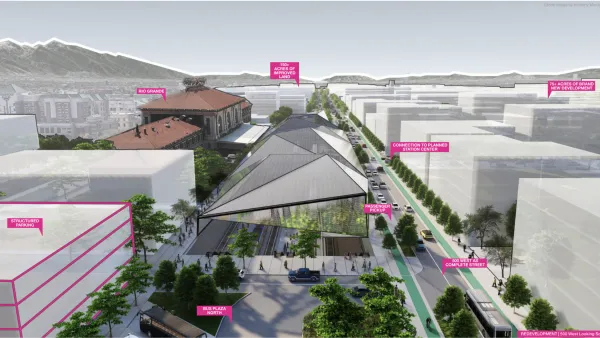As the 100th anniversary of its opening approaches, The New York Times recounts the birth of one of the finest railway stations in the world - Grand Central Terminal.
The "product of local politics, bold architecture, brutal flexing of corporate muscle and visionary engineering," Grand Central Terminal officially opened to the public in February 2, 1913 after 10 years of construction. The Times excerpts the story of the $2 billion (in today's dollars) terminal's birth from “Grand Central: How a Train Station Transformed America,” by Sam Roberts.
Among the most radical of the terminal's innovations in replacing the former Grand Central Station was that by accommodating electric trains, rather than steam locomotives, "[t]he 'veritable Chinese Wall’ that bisected the city for 14 blocks could be eliminated. The air above the yards could be magically transformed into valuable real estate in the heart of Manhattan."
Though a decade and millions of dollars were spent constructing the station's various feats of engineering, no expense was spared in accommodating the station's passengers either. "When it was finally completed, Grand Central could boast a separate women’s waiting room with oak floors and wainscoting and maids at the ready; a ladies’ shoe-polishing room 'out of sight of the rubbernecks' and staffed by 'colored girls in neat blue liveries'; a telephone room for making calls; a salon gussied up with walls and ceilings of Carrara glass, 'where none but her own sex will see while she had her hair dressed'; a dressing room attended by a maid (at 25 cents); and a private barbershop for men, which could be rented for $1 an hour, and a public version where 'the customer may elect to be shaved in any one of 30 languages.'”
"When Grand Central was finally finished, the only thing lacking was adjectives. The Times produced a special section of the newspaper and hailed the terminal as 'a monument, a civic center, or, if one will, a city.'”
“Without exception,” the newspaper said, “it is not only the greatest station in the United States, but the greatest station, of any type, in the world.”
FULL STORY: 100 Years of Grandeur

Analysis: Cybertruck Fatality Rate Far Exceeds That of Ford Pinto
The Tesla Cybertruck was recalled seven times last year.

National Parks Layoffs Will Cause Communities to Lose Billions
Thousands of essential park workers were laid off this week, just before the busy spring break season.

Retro-silient?: America’s First “Eco-burb,” The Woodlands Turns 50
A master-planned community north of Houston offers lessons on green infrastructure and resilient design, but falls short of its founder’s lofty affordability and walkability goals.

Test News Post 1
This is a summary

Analysis: Cybertruck Fatality Rate Far Exceeds That of Ford Pinto
The Tesla Cybertruck was recalled seven times last year.

Test News Headline 46
Test for the image on the front page.
Urban Design for Planners 1: Software Tools
This six-course series explores essential urban design concepts using open source software and equips planners with the tools they need to participate fully in the urban design process.
Planning for Universal Design
Learn the tools for implementing Universal Design in planning regulations.
EMC Planning Group, Inc.
Planetizen
Planetizen
Mpact (formerly Rail~Volution)
Great Falls Development Authority, Inc.
HUDs Office of Policy Development and Research
NYU Wagner Graduate School of Public Service



























